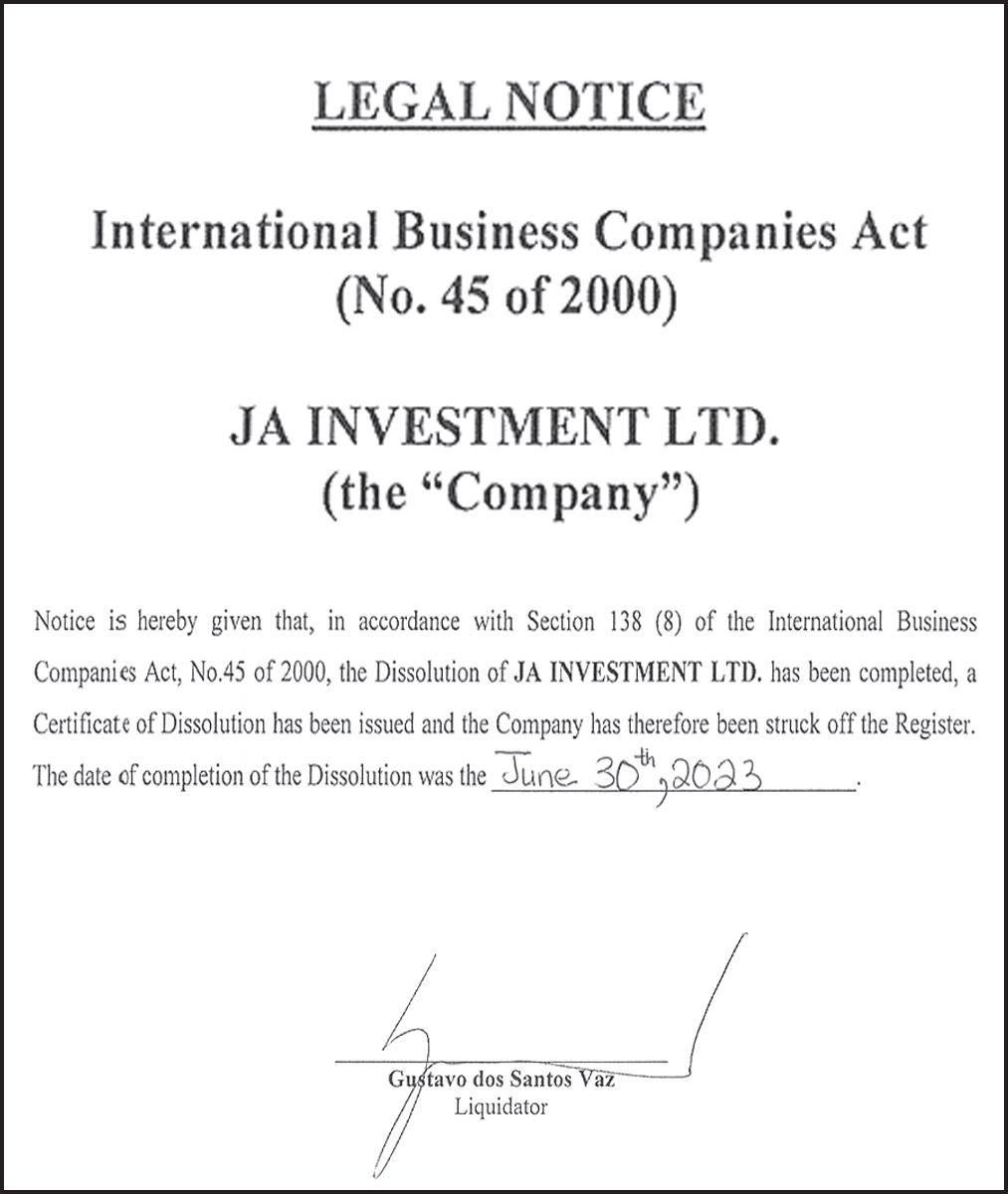
2 minute read
Retail savings bond in ‘final approval stages’
from 07262023 BUSINESS
by tribune242
including input from the Commonwealth Secretariat,” the Governor told this newspaper. “The framework is in the final stages of approvals.
“The saving bonds will look similar to Bahamas Government Registered Stock (BRS) in many ways, having stated terms to maturity, face value and paying interest on a periodic basis. But it will appeal to smaller investors, who will have the option of making purchases in regular, smaller and potentially more affordable increments than for BRS. This will place the instrument within reach of the wider population.
Advertisement
“The savings bond, in addition to featuring low investment increments, would offer competitive interest rates with no material disadvantage over buying other government bonds of the same maturity,” Mr Rolle continued. “It is intended to encourage savings, particularly through the frequency of monthly offers. “The main objective of the savings bond framework is to encourage a culture of increased savings among the population, thereby promoting a higher incidence of financial independence. As structured, the instrument would make it easier for those with lesser financial resources to accumulate savings in affordable increments, and to have access to low-risk rates of return that are typically only within the reach of investors with large sums to invest.
“The benefit for the Government is that it would be delivering another investment/savings option to residents that has the potential to tap investors who may not currently participate in the securities market. However, this is expected to be a very gradual result over time.”
Turning to the October target for launching “competitive bidding” on the Government’s BRS bond issues, Mr Rolle described this as a move away from the current structure where all issues are purchased at “par” or 100 percent of face value and at set interest coupons.
“Bahamas Government Registered Stock (BRS) offers are currently issued on a non-competitive basis. What this means is that investors submit applications to purchase bonds at par value at a set price in the primary market,” Mr Rolle explained. “Under competitive bidding, the investors would have to indicate the price at which they wish to purchase the bonds, given the coupon rates of interest that the Government would set in advance.
“Investors who offer the best or highest price for such bonds on offer would be allowed to purchase the amounts being offered. Investors who do not offer competitive bids could find themselves excluded from an offering. In instances where there is an over-subscription to a bond offering, the bidders who offer the best price could get fully satisfied, while others could be completely shut out.
“This is different from a non-tender process, where the bonds are allocated on a first come, first served basis or all investors get a reduced, prorated amount.
The competitive bidding will be done through the Bahamas Government Securities Depository (BGSD) system, same as the Treasury Bill auctions, and would be a transparent and objective process,” he added.
“A tender is a more transparent process for the market to price bonds in line with the level of interest expressed by investors. It should be noted though that each tender process would reserve a fraction of the bonds for non-competitive investors. Rather than submitting a bid, such investors would be consenting in advance to pay the average price obtained from successful competitive bids.”
Speaking to the benefits of shifting to competitive bidding, Mr Rolle said: “Competitive bidding initiates price discovery and, for government bonds, would help to develop a true yield curve. This is a major step in further developing the domestic securities market.
“It would empower the market to develop more transparent bond prices, rather than reliance on either government or the Central Bank setting the both price and yield. This approach should build further confidence in the market and enhance the level of take-up of government securities in both the primary and secondary markets.”
The Central Bank is now also due to publish bond issuance schedules 15 days before the start of every quarter, and the Governor added: “This is mostly a shift in timing, as bond issuance calendars have been published since 2018. Bond issuance calendars are planning tools for both investors and government. They enhance market transparency and development. In









